Diabetic Peripheral Neuropathy
Chemotherapy-induced Peripheral Neuropathy
Idiopathic Peripheral Neuropathy
HIV/AIDS Associated Peripheral Neuropathy
Pharmacological Therapies
Pain Relievers
Anti-seizure Medications
Antidepressants
Non-Pharmacological Therapies
Transcutaneous Electrical Nerve Stimulation
Plasma Exchange
Intravenous Immune Globulin
Others
Hospitals and Clinics
Ambulatory Centers
Others
North America Peripheral Neuropathy Market by TypeDiabetic Peripheral Neuropathy
Chemotherapy-induced Peripheral Neuropathy
Idiopathic Peripheral Neuropathy
HIV/AIDS Associated Peripheral Neuropathy
North America Peripheral Neuropathy Market by TreatmentPharmacological Therapies
Pain Relievers
Anti-seizure Medications
Antidepressants
Non-Pharmacological Therapies
Transcutaneous Electrical Nerve Stimulation
Plasma Exchange
Intravenous Immune Globulin
Others
North America Peripheral Neuropathy Market by End UserHospitals and Clinics
Ambulatory Centers
Others
US Peripheral Neuropathy Market by TypeDiabetic Peripheral Neuropathy
Chemotherapy-induced Peripheral Neuropathy
Idiopathic Peripheral Neuropathy
HIV/AIDS Associated Peripheral Neuropathy
US Peripheral Neuropathy Market by TreatmentPharmacological Therapies
Pain Relievers
Anti-seizure Medications
Antidepressants
Non-Pharmacological Therapies
Transcutaneous Electrical Nerve Stimulation
Plasma Exchange
Intravenous Immune Globulin
Others
US Peripheral Neuropathy Market by End UserHospitals and Clinics
Ambulatory Centers
Others
Canada Peripheral Neuropathy Market by TypeDiabetic Peripheral Neuropathy
Chemotherapy-induced Peripheral Neuropathy
Idiopathic Peripheral Neuropathy
HIV/AIDS Associated Peripheral Neuropathy
Canada Peripheral Neuropathy Market by TreatmentPharmacological Therapies
Pain Relievers
Anti-seizure Medications
Antidepressants
Non-Pharmacological Therapies
Transcutaneous Electrical Nerve Stimulation
Plasma Exchange
Intravenous Immune Globulin
Others
Canada Peripheral Neuropathy Market by End UserHospitals and Clinics
Ambulatory Centers
Others
Europe Peripheral Neuropathy Market by TypeDiabetic Peripheral Neuropathy
Chemotherapy-induced Peripheral Neuropathy
Idiopathic Peripheral Neuropathy
HIV/AIDS Associated Peripheral Neuropathy
Europe Peripheral Neuropathy Market by TreatmentPharmacological Therapies
Pain Relievers
Anti-seizure Medications
Antidepressants
Non-Pharmacological Therapies
Transcutaneous Electrical Nerve Stimulation
Plasma Exchange
Intravenous Immune Globulin
Others
Europe Peripheral Neuropathy Market by End UserHospitals and Clinics
Ambulatory Centers
Others
Germany Outlook (USD Billion, 2019-2030)
Germany Peripheral Neuropathy Market by TypeDiabetic Peripheral Neuropathy
Chemotherapy-induced Peripheral Neuropathy
Idiopathic Peripheral Neuropathy
HIV/AIDS Associated Peripheral Neuropathy
Germany Peripheral Neuropathy Market by TreatmentPharmacological Therapies
Pain Relievers
Anti-seizure Medications
Antidepressants
Non-Pharmacological Therapies
Transcutaneous Electrical Nerve Stimulation
Plasma Exchange
Intravenous Immune Globulin
Others
Germany Peripheral Neuropathy Market by End UserHospitals and Clinics
Ambulatory Centers
Others
France Peripheral Neuropathy Market by TypeDiabetic Peripheral Neuropathy
Chemotherapy-induced Peripheral Neuropathy
Idiopathic Peripheral Neuropathy
HIV/AIDS Associated Peripheral Neuropathy
Pharmacological Therapies
Pain Relievers
Anti-seizure Medications
Antidepressants
Non-Pharmacological Therapies
Transcutaneous Electrical Nerve Stimulation
Plasma Exchange
Intravenous Immune Globulin
Others
France Peripheral Neuropathy Market by End UserHospitals and Clinics
Ambulatory Centers
Others
UK Peripheral Neuropathy Market by TypeDiabetic Peripheral Neuropathy
Chemotherapy-induced Peripheral Neuropathy
Idiopathic Peripheral Neuropathy
HIV/AIDS Associated Peripheral Neuropathy
UK Peripheral Neuropathy Market by TreatmentPharmacological Therapies
Pain Relievers
Anti-seizure Medications
Antidepressants
Non-Pharmacological Therapies
Transcutaneous Electrical Nerve Stimulation
Plasma Exchange
Intravenous Immune Globulin
Others
UK Peripheral Neuropathy Market by End UserHospitals and Clinics
Ambulatory Centers
Others
Italy Peripheral Neuropathy Market by TypeDiabetic Peripheral Neuropathy
Chemotherapy-induced Peripheral Neuropathy
Idiopathic Peripheral Neuropathy
HIV/AIDS Associated Peripheral Neuropathy
Italy Peripheral Neuropathy Market by TreatmentPharmacological Therapies
Pain Relievers
Anti-seizure Medications
Antidepressants
Non-Pharmacological Therapies
Transcutaneous Electrical Nerve Stimulation
Plasma Exchange
Intravenous Immune Globulin
Others
Italy Peripheral Neuropathy Market by End UserHospitals and Clinics
Ambulatory Centers
Others
Spain Peripheral Neuropathy Market by TypeDiabetic Peripheral Neuropathy
Chemotherapy-induced Peripheral Neuropathy
Idiopathic Peripheral Neuropathy
HIV/AIDS Associated Peripheral Neuropathy
Spain Peripheral Neuropathy Market by TreatmentPharmacological Therapies
Pain Relievers
Anti-seizure Medications
Antidepressants
Non-Pharmacological Therapies
Transcutaneous Electrical Nerve Stimulation
Plasma Exchange
Intravenous Immune Globulin
Others
Spain Peripheral Neuropathy Market by End UserHospitals and Clinics
Ambulatory Centers
Others
Rest Of Europe Peripheral Neuropathy Market by TypeDiabetic Peripheral Neuropathy
Chemotherapy-induced Peripheral Neuropathy
Idiopathic Peripheral Neuropathy
HIV/AIDS Associated Peripheral Neuropathy
Rest of Europe Peripheral Neuropathy Market by TreatmentPharmacological Therapies
Pain Relievers
Anti-seizure Medications
Antidepressants
Non-Pharmacological Therapies
Transcutaneous Electrical Nerve Stimulation
Plasma Exchange
Intravenous Immune Globulin
Others
Rest of Europe Peripheral Neuropathy Market by End UserHospitals and Clinics
Ambulatory Centers
Others
Asia-Pacific Peripheral Neuropathy Market by TypeDiabetic Peripheral Neuropathy
Chemotherapy-induced Peripheral Neuropathy
Idiopathic Peripheral Neuropathy
HIV/AIDS Associated Peripheral Neuropathy
Asia-Pacific Peripheral Neuropathy Market by TreatmentPharmacological Therapies
Pain Relievers
Anti-seizure Medications
Antidepressants
Non-Pharmacological Therapies
Transcutaneous Electrical Nerve Stimulation
Plasma Exchange
Intravenous Immune Globulin
Others
Asia-Pacific Peripheral Neuropathy Market by End UserHospitals and Clinics
Ambulatory Centers
Others
China Peripheral Neuropathy Market by TypeDiabetic Peripheral Neuropathy
Chemotherapy-induced Peripheral Neuropathy
Idiopathic Peripheral Neuropathy
HIV/AIDS Associated Peripheral Neuropathy
China Peripheral Neuropathy Market by TreatmentPharmacological Therapies
Pain Relievers
Anti-seizure Medications
Antidepressants
Non-Pharmacological Therapies
Transcutaneous Electrical Nerve Stimulation
Plasma Exchange
Intravenous Immune Globulin
Others
China Peripheral Neuropathy Market by End UserHospitals and Clinics
Ambulatory Centers
Others
Japan Peripheral Neuropathy Market by TypeDiabetic Peripheral Neuropathy
Chemotherapy-induced Peripheral Neuropathy
Idiopathic Peripheral Neuropathy
HIV/AIDS Associated Peripheral Neuropathy
Japan Peripheral Neuropathy Market by TreatmentPharmacological Therapies
Pain Relievers
Anti-seizure Medications
Antidepressants
Non-Pharmacological Therapies
Transcutaneous Electrical Nerve Stimulation
Plasma Exchange
Intravenous Immune Globulin
Others
Japan Peripheral Neuropathy Market by End UserHospitals and Clinics
Ambulatory Centers
Others
India Peripheral Neuropathy Market by TypeDiabetic Peripheral Neuropathy
Chemotherapy-induced Peripheral Neuropathy
Idiopathic Peripheral Neuropathy
HIV/AIDS Associated Peripheral Neuropathy
India Peripheral Neuropathy Market by TreatmentPharmacological Therapies
Pain Relievers
Anti-seizure Medications
Antidepressants
Non-Pharmacological Therapies
Transcutaneous Electrical Nerve Stimulation
Plasma Exchange
Intravenous Immune Globulin
Others
India Peripheral Neuropathy Market by End UserHospitals and Clinics
Ambulatory Centers
Others
Australia Peripheral Neuropathy Market by TypeDiabetic Peripheral Neuropathy
Chemotherapy-induced Peripheral Neuropathy
Idiopathic Peripheral Neuropathy
HIV/AIDS Associated Peripheral Neuropathy
Australia Peripheral Neuropathy Market by TreatmentPharmacological Therapies
Pain Relievers
Anti-seizure Medications
Antidepressants
Non-Pharmacological Therapies
Transcutaneous Electrical Nerve Stimulation
Plasma Exchange
Intravenous Immune Globulin
Others
Australia Peripheral Neuropathy Market by End UserHospitals and Clinics
Ambulatory Centers
Others
South Korea Peripheral Neuropathy Market by TypeDiabetic Peripheral Neuropathy
Chemotherapy-induced Peripheral Neuropathy
Idiopathic Peripheral Neuropathy
HIV/AIDS Associated Peripheral Neuropathy
South Korea Peripheral Neuropathy Market by TreatmentPharmacological Therapies
Pain Relievers
Anti-seizure Medications
Antidepressants
Non-Pharmacological Therapies
Transcutaneous Electrical Nerve Stimulation
Plasma Exchange
Intravenous Immune Globulin
Others
South Korea Peripheral Neuropathy Market by End UserHospitals and Clinics
Ambulatory Centers
Others
Rest of Asia-Pacific Peripheral Neuropathy Market by TypeDiabetic Peripheral Neuropathy
Chemotherapy-induced Peripheral Neuropathy
Idiopathic Peripheral Neuropathy
HIV/AIDS Associated Peripheral Neuropathy
Rest of Asia-Pacific Peripheral Neuropathy Market by TreatmentPharmacological Therapies
Pain Relievers
Anti-seizure Medications
Antidepressants
Non-Pharmacological Therapies
Transcutaneous Electrical Nerve Stimulation
Plasma Exchange
Intravenous Immune Globulin
Others
Rest of Asia-Pacific Peripheral Neuropathy Market by End UserHospitals and Clinics
Ambulatory Centers
Others
Rest of the World Peripheral Neuropathy Market by TypeDiabetic Peripheral Neuropathy
Chemotherapy-induced Peripheral Neuropathy
Idiopathic Peripheral Neuropathy
HIV/AIDS Associated Peripheral Neuropathy
Rest of the World Peripheral Neuropathy Market by TreatmentPharmacological Therapies
Pain Relievers
Anti-seizure Medications
Antidepressants
Non-Pharmacological Therapies
Transcutaneous Electrical Nerve Stimulation
Plasma Exchange
Intravenous Immune Globulin
Others
Rest of the World Peripheral Neuropathy Market by End UserHospitals and Clinics
Ambulatory Centers
Others
Middle East Peripheral Neuropathy Market by TypeDiabetic Peripheral Neuropathy
Chemotherapy-induced Peripheral Neuropathy
Idiopathic Peripheral Neuropathy
HIV/AIDS Associated Peripheral Neuropathy
Middle East Peripheral Neuropathy Market by TreatmentPharmacological Therapies
Pain Relievers
Anti-seizure Medications
Antidepressants
Non-Pharmacological Therapies
Transcutaneous Electrical Nerve Stimulation
Plasma Exchange
Intravenous Immune Globulin
Others
Middle East Peripheral Neuropathy Market by End UserHospitals and Clinics
Ambulatory Centers
Others
Africa Peripheral Neuropathy Market by TypeDiabetic Peripheral Neuropathy
Chemotherapy-induced Peripheral Neuropathy
Idiopathic Peripheral Neuropathy
HIV/AIDS Associated Peripheral Neuropathy
Africa Peripheral Neuropathy Market by TreatmentPharmacological Therapies
Pain Relievers
Anti-seizure Medications
Antidepressants
Non-Pharmacological Therapies
Transcutaneous Electrical Nerve Stimulation
Plasma Exchange
Intravenous Immune Globulin
Others
Africa Peripheral Neuropathy Market by End UserHospitals and Clinics
Ambulatory Centers
Others
Latin America Peripheral Neuropathy Market by TypeDiabetic Peripheral Neuropathy
Chemotherapy-induced Peripheral Neuropathy
Idiopathic Peripheral Neuropathy
HIV/AIDS Associated Peripheral Neuropathy
Latin America Peripheral Neuropathy Market by TreatmentPharmacological Therapies
Pain Relievers
Anti-seizure Medications
Antidepressants
Non-Pharmacological Therapies
Transcutaneous Electrical Nerve Stimulation
Plasma Exchange
Intravenous Immune Globulin
Others
Latin America Peripheral Neuropathy Market by End UserHospitals and Clinics
Ambulatory Centers
Others
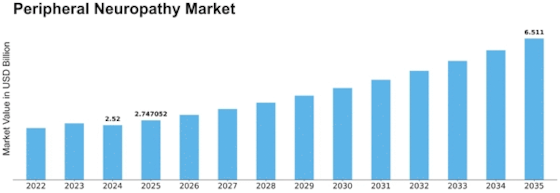

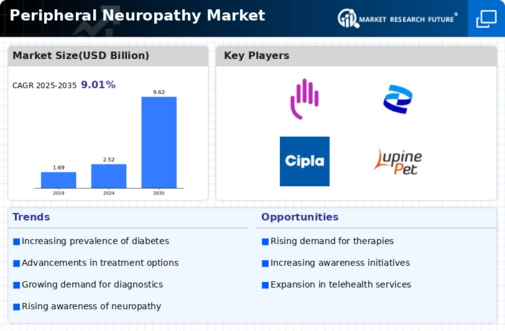
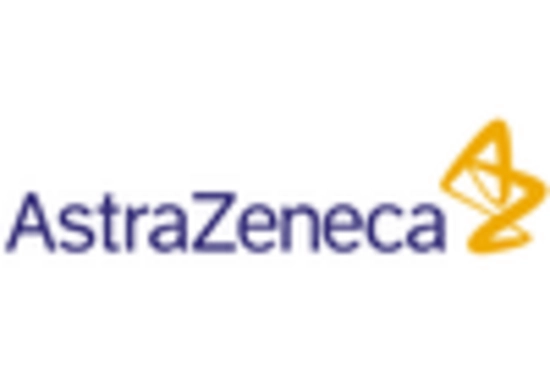
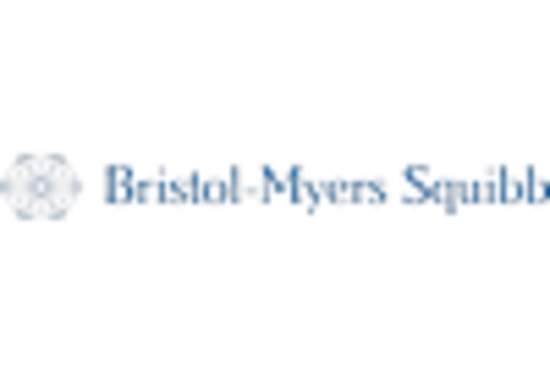

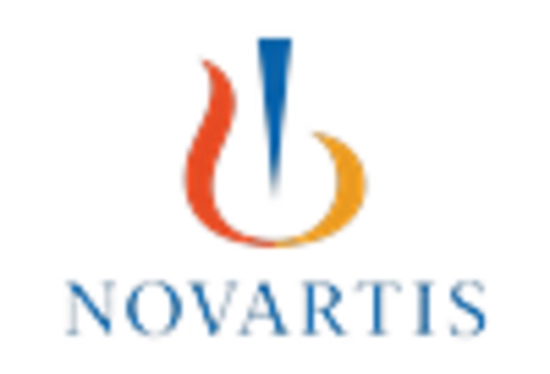
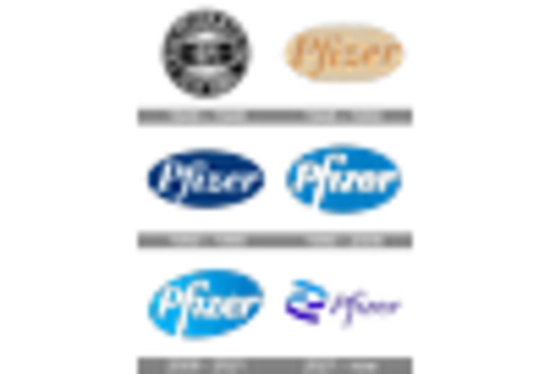
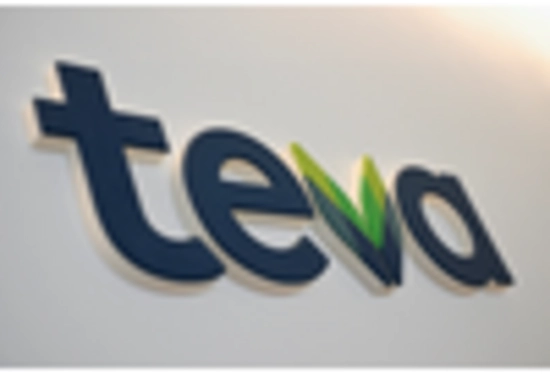









Leave a Comment